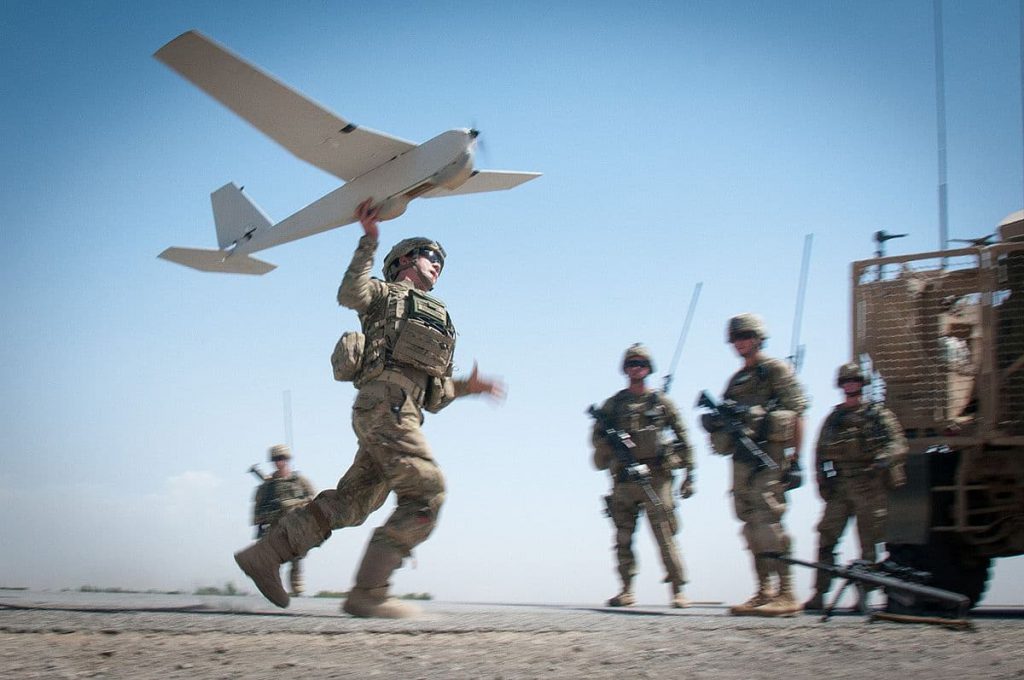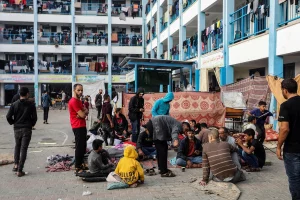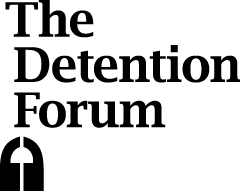
Drones have become a prominent feature of the way the United States is waging counter-insurgency operations, drastically altering the nature of their involvement in complex conflicts. But with the advent of this controversial weapon & the increasing evidence of civilian harm resulting from it, multiple questions arise on what the effect is going to be on efforts for accountability and justice, particularly in Afghanistan, writes Kaitlin Kaye.
Since the United States’ (US) Reaper drone strike in Kabul on August 29th 2021, multiple moral, legal, and ethical questions have once again come to the fore of the international conversation regarding the use of drones in warfare. This strike by the US military was later confirmed to have not killed the intended ISIS target, but Mr. Ahmadi, a longtime worker for a US aid group and many of his family members. The US military initially claimed the attack may have killed three civilians, but a few weeks later, the New York Times reported that the attack killed ten civilians, including seven children. This was not the first incident of wrongful targeting and false reporting of the fatalities by the US during its occupation of Afghanistan. Wrongful killings have occurred usually using airstrikes and drones, which have had a disastrous effect on Afghan civilians, as documented by the United Nations Assistance Mission to Afghanistan (UNAMA).
More recently, a damming exposé of the American air war in the Middle East from 2014 onward was released by the New York Times in an investigation entitled ‘The Civilian Casualty Files’. It dug through the US military’s own confidential assessments of more than 1,300 reports of civilian casualties. While these reports examine airstrikes in Iraq and Syria – requests for records from Afghanistan are the subject of a new lawsuit from the New York Times – they uncover how the civilian casualties stemming from these airstrikes have become an ‘institutional acceptance of an inevitable collateral toll’ under the logic of the US military.
So how did the US military’s use of drones in Afghanistan escalate from 2001, and how has this affected ordinary Afghan civilians? And furthermore, what is the outlook for securing justice for those Afghans directly affected by US military action?
Drones, or Unmanned Aerial Vehicles (UAV), have been embraced by successive American presidents since the attacks of 9/11 to wage the ‘Global War on Terror’ (GWOT) and to carry out strikes against suspected terrorists – with little public scrutiny. The first instance of a drone attack in Afghanistan by US forces was on October 7, 2001 – the first night of the US military intervention, then called ‘Operation Enduring Freedom’. That first night featured a host of laser-guided munitions dropped from the air and Tomahawk cruise missiles launched from the sea, as well as one CIA-remote-controlled, propeller-driven spy plane – a drone. This drone was intended to target and kill then Taliban leader, Mullah Omar in his home in Kandahar.
However, instead of striking Mullah Omar’s compound, the drone destroyed a vehicle outside it; in the ensuing chaos, Mullah Omar escaped. While this first drone attack did not meet its intended objective, its use would set a dangerous precedent for the rest of the Afghanistan war – the remote targeting of persons of interest to the US from hundreds or thousands of miles away. The use of this weapon was then scaled up when the US Air Force and Special Forces received their own armed drone fleets after 2001. However, time and again their use was questioned, especially with the use of ‘signature strikes’.
Two types of drone targeting are used by the US military: ‘personality’ and ‘signature’ strikes. In ‘personality’ strikes the identity of those who are being targeted is known, and this tactic is also used with airstrikes. Personality strikes have been used by the US military for some time to target those that are considered a threat to national security. On the other hand, ‘signature’ strikes are a relatively new practice first used by President Bush in 2008 and expanded during the Obama and Trump Administrations. In ‘signature’ strikes, attacks are not directed against known individuals but, instead, are undertaken on the basis of a set of observed actions and indicators understood to be significant enough to warrant lethal action. However, the United States does not disclose what behaviors justify a ‘signature’ strike, and there is no publicly available guidance on this issue. As Sarah Holewinski – the Washington Director at Human Rights Watch – pointed out in her 2015 work “Just Trust Us”, this in effect means that civilians in an area under surveillance do not know what actions are considered suspicious and may result in a deadly drone strike. The group in question could be anything from armed shepherds patrolling their land to a large gathering of people celebrating a special occasion which may appear suspicious to the CIA or military analyst monitoring them at the time.
The US does not routinely have its own ground-based intelligence in the areas it is surveilling and must rely on local contacts for intelligence, this is called the ‘over-the-horizon’ (OTH) strategy. The OTH strategy relies on what one analyst, as quoted by the Brookings Institution, describes as “cooperation with local partners and selective interventions of air power, US special operations forces, and intelligence, economic, and political support from regional bases outside of Afghanistan for the narrow purpose of counterterrorism.” However, there are doubts surrounding the US’ technical infrastructure and intelligence sharing agreements in place that should enable this strategy to work and target intended persons of interest without impacting civilians. The Reaper drone strike in August which killed ten civilians warrants these doubts and calls into question the entirety of the OTH strategy to meet its intended aims.
As noted, the use of drones in the GWOT has increased under successive American presidents, up to and including President Trump. In terms of numbers, the Obama Administration conducted more strikes in its first year than the Bush Administration carried out during its entire presidency. A total of 563 strikes, largely by drones, were carried out under Obama’s two terms, compared to 57 under Bush according to numbers provided by the Bureau of Investigative Journalism.
Additionally, the Obama White House released figures on the number of people killed by drone strikes between January 2009 and the end of 2015 from areas ‘outside of active hostilities’, which estimated that the number of civilians killed in these strikes was between 64 and 116. These estimates contrast with those recorded by the Bureau of Investigative Journalism, which puts this number between 380 and 801. These numbers relate to strikes considered to be ‘outside areas of active hostilities’, while ‘areas of active hostilities’ covered by this report offered by the White House refers to Afghanistan, Iraq, and Syria. This represents the US’ use of the 2001 Authorization for the Use of Military Force (AUMF), which was passed in the days immediately after 9/11 and allowed the President to “use all necessary and appropriate force against those nations, organizations, or persons he determines planned, authorized, committed, or aided the terrorist attacks that occurred on September 11, 2001…” to conduct counterterrorism activities in places where it does not have a military presence on the ground. According to a report by Brown University’s Costs of War project, the AUMF since 2001 has been used to justify counterterrorism operations, including drone strikes, in 22 countries.
However, the policy of reporting civilian casualties arising from drone strikes ‘outside areas of active hostilities’ was later revoked by President Trump, along with the rest of the few accountability measures put in place by the Obama Administration. Under Obama, new rules of engagement around the use of airstrikes, both unmanned and manned, in Afghanistan were introduced in his first term by the newly appointed General McChrystal as an effort to reduce the number of civilian casualties. This move by the Obama Administration, represented an effort to address and mitigate the problem of rising civilian casualties. However, these stricter rules of engagement on the use of airstrikes in residential areas, for example, were relaxed in 2017 by President Trump, resulting in a massive increase in civilian casualties. A report by Brown University’s Costs of War project notes that from the last year of the Obama administration in 2016 to the last full year of recorded data during the Trump Administration in 2019, the number of civilians killed by US airstrikes in Afghanistan increased from 253 to 659. Additionally, in Trump’s first year in office in 2017, his Administration eased two restrictions for the use of drone strikes: removed the limitation that only allowed strikes on high-ranking militants andremoved the previous vetting process for drone strikes.
In terms of the war in Afghanistan, it has been difficult to obtain specific numbers of drone attacks carried out by the US, as the US military does not release publicly which type of aerial attack was employed for every strike conducted. However, reporting work carried out by UNAMA has shed some light on the use of drones in Afghanistan. The 2012 Annual Report on the Protection of Civilians in Armed Conflict for Afghanistan reported that, “The number of weapons released by drones jumped from 294 in 2011 to 506 in 2012.” Further, the 2013 Annual Report on the Protection of Civilians in Armed Conflict for Afghanistan recorded 59 civilian casualties from 19 incidents of unmanned aerial vehicles (drones) in 2013, more than tripling such casualties recorded in 2012. During his Administration, President Obama defended the use of drones in warfare stating that, “Conventional airpower or missiles are far less precise than drones and are likely to cause more civilian casualties and more local outrage”. However, the evidence to support this claim is weak at best.
There have been doubts from the outset on the claimed surgical precision of drones in regard to civilian harm; statistically drones were more likely to cause civilian casualties than were operations conducted by manned aircraft in Afghanistan as claimed by Sarah Holewinski and Larry Lewis in their 2013 journal article in PRISM. In sum, little to no information has been provided over the course of the war in Afghanistan by the US government on the impact of drones on civilians. The numbers that have been reported by the US differ greatly from those provided by the Bureau of Investigative Journalism. Therefore, the knowledge we have on the impact of drones on civilians in Afghanistan is very limited; the US government, under the guise of ‘national security’ continues to shroud this from the public eye.
Anecdotally, however, many sources speak of the constant terror and levels of anxiety caused by the continuous surveillance flights, particularly at night, by drones in areas being monitored or considered for strikes. This is an extraordinarily cruel and disruptive practice with inevitable negative consequences for local social and economic life.
Despite the evidence provided by UNAMA on the numbers of airstrikes by international military forces, including drones, on civilians and the upscaling of these tactics, there remains no accountability for civilian casualties both at the domestic and international level. Domestically, on 12 December 2021, US Secretary of Defense, Lloyd Austin, decided no action would be taken against US military personnel involved in the August Reaper drone attack that killed 10 civilians. Internationally, in late September 2021, the International Criminal Court (ICC) publicly stated that it will resume its investigations into suspected war crimes and crimes against humanity in Afghanistan since 2003 with a focus on alleged abuses by the Taliban and ISIS, while ‘deprioritizing’ alleged crimes by the US military, the CIA, and the Afghan National Security Forces (ANSF), citing lack of capacity and resources as the reason for the paired down investigation. This move will leave those Afghans and their families who are the victims of these crimes without proper justice or accountability for what has occurred. This stance also signals to the rest of the international community that the ICC’s pursuit of justice is unbalanced and favors those with power and influence.
The US has been militarily engaged for the past twenty years and has inflicted significant harm on Afghan civilians while waging its “Global War on Terror”. Therefore, I ask, amid a catastrophic crisis that includes an economy in freefall and surging humanitarian needs triggered by the United States’ ill-planned departure and decision to block access to the country’s financial reserves – is it not the very least the US could do to provide justice and accountability to those Afghans who have suffered under the constant terror of drones and US airpower?
The views expressed in this opinion piece do not necessarily reflect those of United Against Inhumanity.












